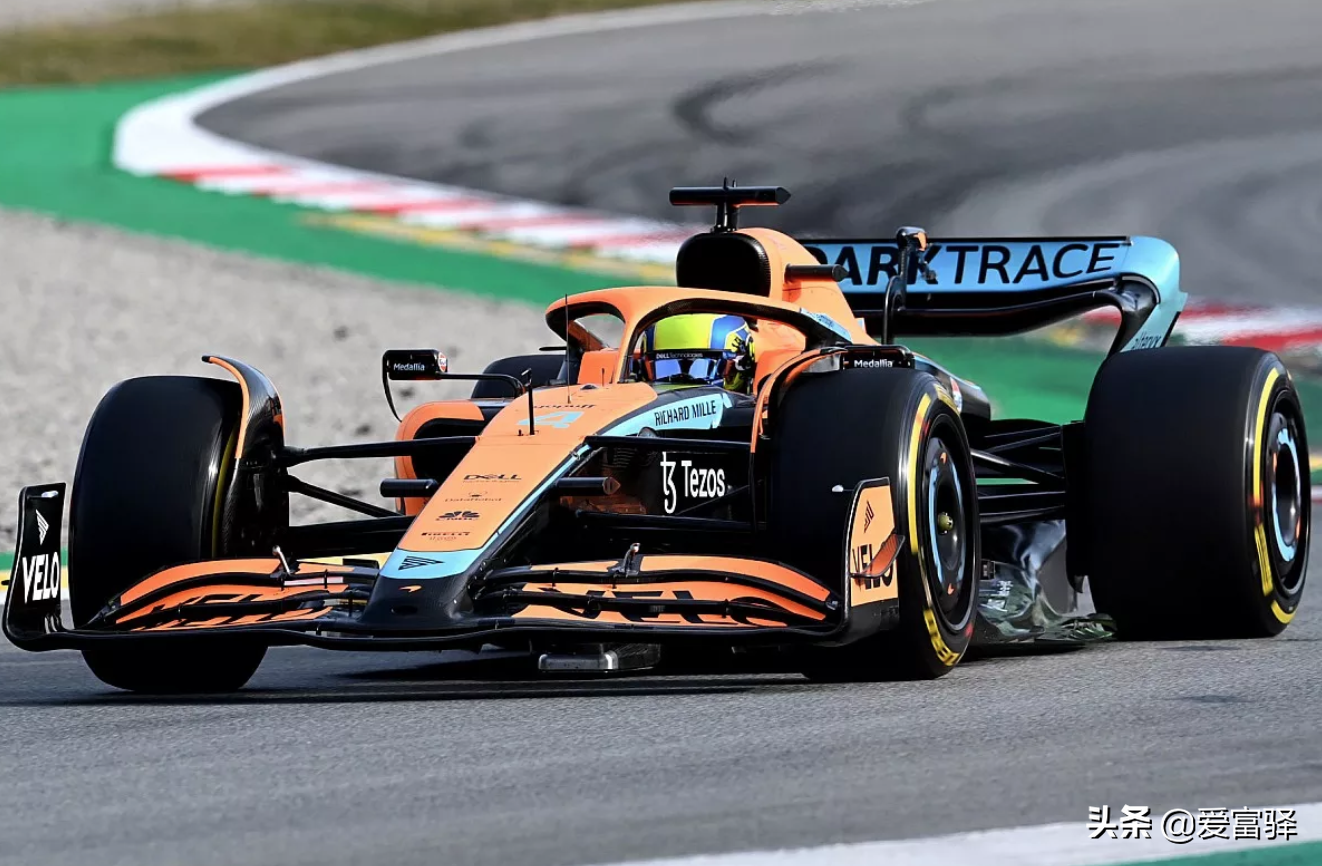As we all know, in last week's winter test in Barcelona, McLaren was the least affected by the dolphin effect.

This inevitably sparked curiosity about how the MCL36 race car circumvented the dolphin effect. Most teams focused their attention on the modification of the baseplate, and the MCL36's side-strip wing design looked more aggressive than other teams.
The "side wing" on the McLaren MCL36 is not an innovative design, almost all cars in the paddock in the 2021 season have different styles of side wing application cases, and this year, this must be within the scope of the new regulations, and we see that it has evolved on the basis of 2021.
As shown by the dotted line in the figure, McLaren's side wing design is much bolder, but it must meet specific dimensional requirements, while there can be no form of slotting or opening under the new regulations, and it must meet its height requirements near the bottom plate.
The side wing design of Alfa Romeo's base plate is very similar to that of the MCL36 and may even be more aggressive.
Compared to the two, the side stripes seen on the C42 are much longer and curved upwards. It can also form a vortex, sealing the airflow under the base plate, while minimizing the airflow blowing to the rear tire, to some extent inhibiting the turbulence caused by the rear tire.
Because the 2022 F1 car is not only aerodynamically different from the past, but various changes will affect the mechanical performance of the car. Under the new rules, the ground effect became the most important source of downforce for the car, and the team wanted to configure the lowest possible floor clearance to establish better coordination between the track surface, the Venturi tunnel and the diffuser. As a result, the suspension settings of the car will be stiffer so that the height of the suspension remains constant. In addition, the use of 18-inch rims and narrower shoulders at the start of the new season may also exacerbate the problem, which will not only have an overall impact on damping, but also have an impact on the oscillations that the tires produce when they deform.
There is no doubt that the fins, openings, slots and fully enclosed openings deployed on the front floor of the rear wheel are all considered to be ways to address the dolphin effect. However, most of these solutions have been declared designed as irregular by the FIA after the winter test, so as other teams look for ways to solve the problem, solutions like McLaren and Alfa Romeo will become the mainstream thinking of other F1 teams.
For the baseplate to be loaded and deformed, the FIA will pay close attention to the upgrades of the various fleets in this regard, and if it deems it necessary, it is expected to introduce more stringent testing.
Other teams brought their own upgrades during the winter test in order to solve the dolphin effect.
On the last day of the Winter Test in Barcelona, Ferrari installed a new base plate on the F1-75, characterized by tongue-like incisions and protrusions. This is expected to be an over-the-top version of The Winter Beta in Bahrain.
Williams deployed a more elaborate version of the FW44's baseplate edges during winter testing, not only with similar openings to Ferraris, but also with long, triangular side strips mounted on the front.
Red Bull Jr. opted for shorter side-striped wings, placed farther ahead of the baseplate.
Instead of opting for separate side stripes, the Red Bull RB18 opted for a simpler approach, consisting of two slots and a curved design idea in the central part of the base plate edge.
To increase the rigidity of the outer edge of the baseplate, Mercedes installed a metal bracket on the last day of testing, hoping to reduce the flexibility of the baseplate.
Aston Martin's baseplate edges don't look complicated, and the team uses height sensors to monitor changes in the floor clearance, which is expected to bring specific opening designs during the Bahrain winter test.
The Haas VF22 features an arched baseplate edge design and has an opening similar to that on a Ferrari F1-75.